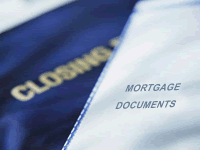Demystifying Mortgages – How Much Can You Borrow?
A home is typically the largest purchase you will make in your lifetime, and for most Canadians this means obtaining a mortgage. The amount of your mortgage will determine the size and location of your new home – not to mention the size of your payments. So how do lending institutions decide how large your mortgage loan can be?
Lending institutions (such as banks, credit unions, trust companies and insurance companies) want to be certain that you are capable of repaying the money you borrow. Consequently, the loan application process is thorough. Lenders consider your income, credit history, debt load, employment history and collateral, including the value of the property you wish to buy.
Although there is some discretion in determining the exact amount, the size of your loan is generally calculated using set formulas – Gross Debt Service Ratio (GDS) and Total Debt Service Ratio (TDS). GDS is the percentage of your gross monthly income (before taxes) required to cover monthly payments on mortgage principal, mortgage interest, property taxes and sometimes heating (often abbreviated as PITH). Your GDS should not exceed 30% to 32% to be eligible for most mortgages. Because many people also owe money to other lenders (car loan, student loan, credit cards, etc.), TDS offers a more accurate estimate of what you can afford. TDS is the percentage of your gross monthly income required to cover PITH plus any other debts. Your TDS should not exceed 40% of your gross monthly income.
There are many other factors that will impact the final mortgage amount. A poor credit history or a spotty employment record, for example, can disqualify you altogether or significantly alter the total. Keep in mind that just because a lender is willing to approve a large mortgage it is no guarantee that you can, in reality, afford the monthly payments.
To truly understand how much you can afford you must examine your other monthly expenses – those not accounted for in the lender’s calculations (such as entertainment, charities, vacations, etc.). Remember that you will also need a lump sum down payment (at least 25% for conventional mortgages and as little as 5% for high-ratio mortgages) and money to cover closing costs. For more information on mortgages, calculators and online applications, visit http://www.royallepage.ca.
Tips for Moving
Moving can be an exciting and overwhelming experience. There is a lot to remember when planning your move, but with some organization your experience can be a lot less stressful.
A Few Weeks Prior to Moving
- Arrange your moving day well in advance – When booking a truck or hiring a moving company, it’s often worth comparing several estimates. Your Royal LePage agent can provide you with some referrals for local and national movers.
- Re- direct your essential services to your new home; arrange to have services such as gas, electricity, and cable TV to be connected on the day the sale closes.
- At your current home, arrange to have your gas, water, and electricity meters read on the day you leave and have the bills forwarded to your new address. If necessary, water heater and furnace rental agreements should to be transferred to the purchaser.
- Update your contact information and provide a forwarding address for schools, work, and services such as banks or insurance companies
- Also, don’t forget to make arrangements for pet or baby sitters for the day of the move.
Days Prior to Moving
- Gather all important personal, medical and insurance documents and keep them separate from other moving items
- Pack valuables and any personal items that you will require in the interim of your house being unpacked.
- Make sure to pack and label items by a theme, such as kitchen or bathroom, so you can easily get organized when unpacking
Day of the Move
- If you are using a moving company make a list of all items to be moved and compare it to the movers to make sure you agree on contents to be delivered
- Check all shelves, closets and cupboards for any items that may have been left behind
After the Move
- Apply for a new drivers license, health card or other items that require an up to date address
- Register your car at your new address. Your insurance company will have a limited time grace period so make sure you register before the deadline
- Check open and closing hours of stores and services in your new neighborhood. This will help you feel settled earlier
Moving can be difficult, but with careful planning your move can go smoothly so that you can start enjoying your new home right away.

